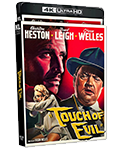TOUCH OF EVIL
Touch of Evil is a quintessential film noir directed by Orson Welles in 1958. The movie’s themes of corruption, greed, and moral ambiguity are hallmarks of the genre. From its opening scene, where a car is rigged with a bomb, to its dramatic and tragic conclusion, Touch of Evil delivers a gripping and unforgettable noir experience.
PLOT
Touch of Evil opens with an extended tracking shot that follows a car as it crosses the border from Mexico into the United States. We see the car as it passes through the crowded streets of a border town, eventually arriving at a border checkpoint. The camera then follows the car as it continues its journey, until a bomb explodes inside the vehicle, killing the occupants and sending debris flying in all directions.
The investigation into the bombing is led by Hank Quinlan (Orson Welles), a detective with a reputation for using brutal and unethical methods to solve cases. Quinlan is accompanied by his partner, Pete Menzies (Joseph Calleia), and together they begin to unravel the mystery of the bombing. They quickly identify the victims as Rudy Linnekar (Jeffrey Green) and his girlfriend, Zita (Joi Lansing), who were both involved in the criminal underworld.
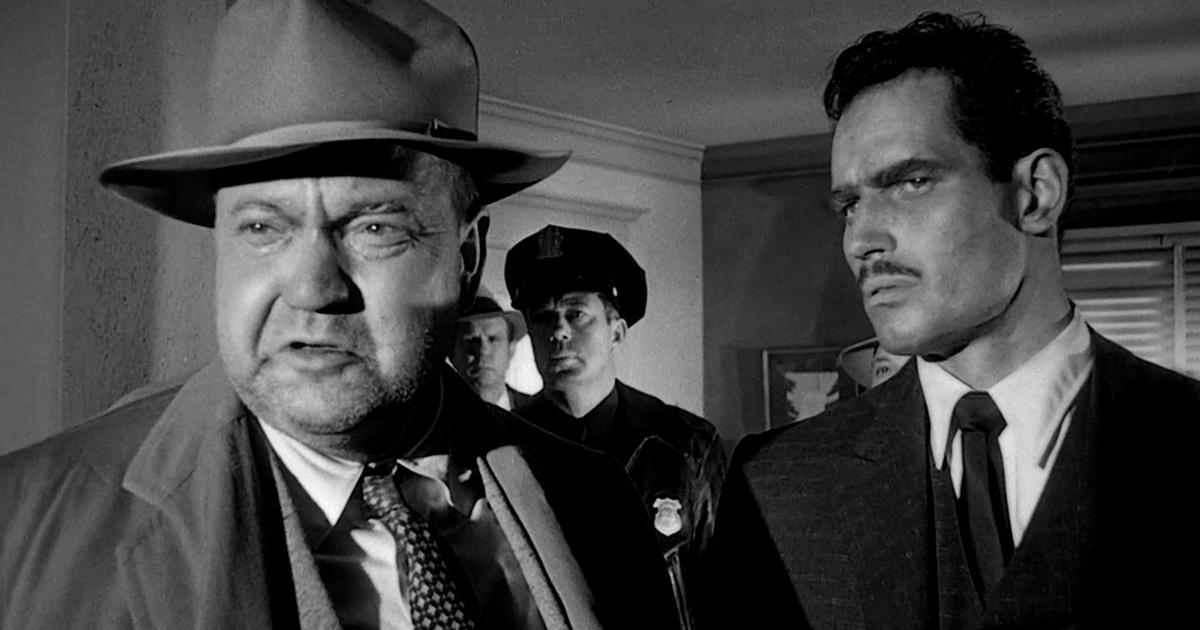
As the investigation progresses, Quinlan begins to focus on a suspect named Sanchez (Victor Millan), who he believes was responsible for the bombing. However, Sanchez’s wife, Susie (Janet Leigh), becomes involved in the case when she is taken into custody and questioned by the police. She pleads with her husband’s lawyer, Tanya (Marlene Dietrich), to help prove his innocence.
Meanwhile, the Mexican narcotics officer, Mike Vargas (Charlton Heston), arrives in town with his wife, Susan (Janet Leigh), who is a wealthy and attractive blonde. Vargas is initially called in to assist with the investigation, but he soon clashes with Quinlan, who resents his interference. As the investigation continues, it becomes clear that Quinlan may have planted evidence to frame Sanchez, and Vargas begins to suspect that Quinlan is involved in a larger conspiracy.
As tensions between Vargas and Quinlan escalate, Susie is kidnapped by a group of criminals, who are seeking to use her as leverage in their own criminal activities. Vargas must race against time to rescue his wife and clear Sanchez’s name, all while navigating the complex web of corruption and deceit that permeates the border town.
In the film’s climactic sequence, Vargas confronts Quinlan and reveals his suspicions about the planted evidence. Quinlan breaks down and confesses, revealing that his obsession with solving crimes had led him to plant evidence and abuse his power. As the sun rises over the border town, Quinlan collapses and dies, and Vargas and Susie prepare to leave the corrupt and dangerous world behind them.
VISUAL STYLE
The visual style of Touch of Evil is one of its most striking and distinctive features. Directed by Orson Welles, the film is characterized by a number of innovative and visually striking techniques that push the boundaries of traditional filmmaking.
One of the most notable aspects of the film’s visual style is its use of long takes and deep focus cinematography. The opening tracking shot, which follows a car as it crosses the border from Mexico into the United States, is one of the most famous examples of this technique. The shot lasts over three minutes and is filmed in one continuous take, with the camera weaving in and out of the car and the surrounding environment. This technique creates a sense of immersion and immediacy, drawing the audience into the world of the film and giving them a sense of the chaos and confusion of the border town.
Another key element of the film’s visual style is its use of low angles and high contrast lighting. Many scenes are shot from low angles, emphasizing the power and authority of characters like Hank Quinlan. The use of high contrast lighting, with deep shadows and stark contrasts between light and dark, creates a sense of tension and unease, underscoring the film’s themes of corruption and moral ambiguity.
The film also makes use of a number of stylistic flourishes and visual motifs. For example, the recurring image of a ticking time bomb, which is introduced in the opening sequence, creates a sense of impending doom and highlights the high stakes of the investigation. The use of mirrors and reflections in several key scenes underscores the theme of duality and the idea that characters have hidden sides to their personalities. The use of extreme close-ups and distorted camera angles in certain scenes also creates a sense of claustrophobia and disorientation, heightening the tension and suspense.

Throughout the film, Welles also makes use of a distinctive visual aesthetic, characterized by striking compositions and bold, expressive use of color. The film’s rich and evocative visuals are complemented by a memorable score by Henry Mancini, which incorporates elements of jazz and Latin music to create a distinctive and atmospheric soundtrack.
Overall, the visual style of Touch of Evil is one of its most significant and enduring contributions to cinema. The film’s innovative use of long takes, deep focus cinematography, low angles, and high contrast lighting, as well as its striking use of visual motifs and expressive use of color, have made it a landmark in the history of film noir.
RECEPTION
Touch of Evil was initially released in 1958 to mixed reviews and a lukewarm reception at the box office. However, over time, the film has come to be recognized as a masterpiece of film noir and one of Orson Welles’ greatest achievements as a director.
At the time of its release, many critics found the film to be overly convoluted and confusing, with its nonlinear storytelling and multiple plotlines. Some also criticized Welles’ performance as Quinlan, arguing that his makeup and prosthetics made him look ridiculous and detracted from the film’s seriousness.
Despite these criticisms, there were some notable supporters of the film at the time. The French film magazine Cahiers du Cinema praised the film, hailing it as a masterpiece and championing Welles as a visionary director. The influential critic Andrew Sarris argued that its stylistic innovations and complex narrative structure marked it as a landmark of the film noir genre.
In the decades since its release, Touch of Evil has come to be regarded as a classic of film noir and one of the greatest films ever made. Its influence can be seen in the work of later filmmakers, including Martin Scorsese, who has cited the film as a major inspiration for his own work.
In 1998, a restored version of the film was released, which featured a re-edited version of the film that more closely reflected Welles’ original vision. This version of the film received widespread critical acclaim, with many critics hailing it as a major improvement over the original release.
Overall, the reception of Touch of Evil has evolved over time, from a mixed initial response to a widespread recognition of its importance and influence in the film noir genre. Today, the film is widely regarded as a classic of cinema and a testament to Orson Welles’ talent and innovation as a filmmaker.
POPULAR CULTURE
One of the most notable examples of Touch of Evil’s impact on popular culture is its influence on the neo-noir genre. The film’s innovative use of long takes, deep focus cinematography, and high contrast lighting has been cited as a major influence on later films in the genre, including Chinatown, Blade Runner, and Drive. The film’s themes of moral ambiguity and corruption have also been echoed in many later films, including The Departed and The Godfather.
The film has also been the subject of numerous homages and references in popular culture. For example, the opening tracking shot of the film has been referenced in a number of other films and TV shows, including Goodfellas, Boogie Nights, and The Wire. The film’s iconic score, composed by Henry Mancini, has also been used in numerous other films, TV shows, and commercials.
In addition to its impact on popular culture, Touch of Evil has also been the subject of numerous critical studies and academic analyses. The film’s innovative visual style, complex narrative structure, and ambiguous themes have made it a favorite subject for film scholars and critics. The film has also been the subject of several books, including “Touch of Evil: Orson Welles, Director” by Michael Epstein and “The Making of Touch of Evil” by Orson Welles and Tim Burton.
Overall, Touch of Evil’s impact on popular culture has been significant and enduring. Its innovative visual style and complex narrative structure have influenced countless other films and filmmakers, and its themes of moral ambiguity and corruption continue to resonate with audiences today.
Explore more Film Noir
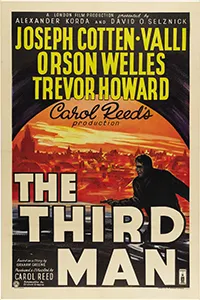
Classic film noir set in post-WWII Vienna, where a writer investigates the mysterious death of his friend.
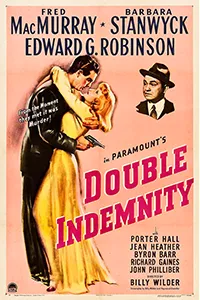
A gripping film noir about a seductive woman who convinces an insurance salesman to plot a murder.
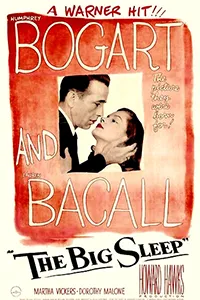
This classic film noir follows private detective Philip Marlowe as he investigates a complex case involving a wealthy family.
